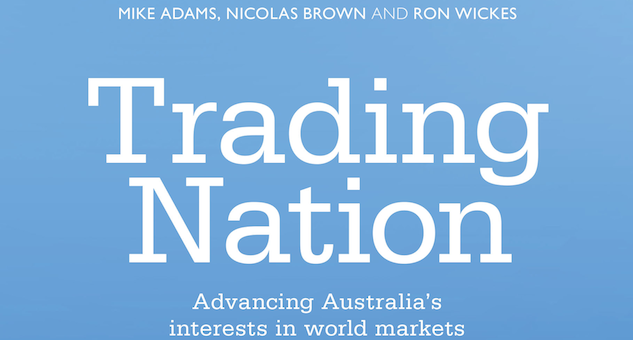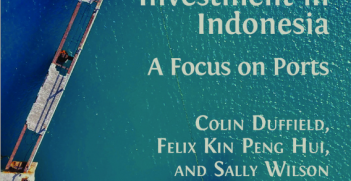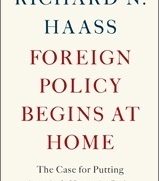Trading Nation: Advancing Australia’s Interests in World Markets

This is a timely publication. It notes Australia’s transition from a focus on multilateral trade liberalisation during the final quarter of the 20th century to a greater reliance on bilateral and multilateral Free Trade Agreements (FTAs) in the 21st century. It observes that this transition is due in part to the emergence of a more multipolar world with the growing economic importance of China, India and Brazil and a reduction in the trade dominance of the United States. It notes that Australia has now largely worked through the opportunities for greater trade openness in manufactures and services, made possible by the domestic economic reforms of the 1980s and 1990s. It points out that a new phase of domestic policy reform to address declining productivity and competitiveness is needed for Australia to continue to expand its trade in a more challenging environment. This is even more important now that the focus of international trade policy is increasingly on ‘behind the border’ non-tariff barriers (NTBs) to trade in services and technical, environmental and food standards, rather than on border measures such as import tariffs and quotas, as in the past.
It is, therefore, high time to take a serious look at Australia’s options for dealing with these changes. This well researched volume makes a useful contribution to unpeeling the challenges by focusing on the close connection between domestic reform and trade policy, as well of course on the role inevitably played by the international trade environment. The book is split into two sections, the first focusing on the evolution of Australia’s trade policy over the second half of the 20th century and a somewhat longer, more sombre second part focused on the future up to 2025-30.
There are several narratives in the first section of the book with trade policy implications. The first deals with the impact of the quickening pace of globalisation since the end of the Second World War, on the composition of world trade. There has taken place a shift away from a focus on manufactures and agriculture to a mutually reinforcing process of expanding investment flows, global supply chains and the rapid growth of services trade including, most recently, through the digital economy. Second, the book traces the transition Australia made from a protected to a more open and competitive economy through the 1970s and 1980s, especially with the domestic economic reforms of the 1980s. It deals with how Australia managed a shift towards services exports through the 1980s and 1990s and how the domestic policy changes of the 1980s and 1990s enabled Australia to adjust its trade policy from a focus on tariffs to ‘behind the border’ NTBs, after the successful conclusion of the World Trade Organisation (WTO) negotiations in 1994. Finally, it focuses on the challenge of FTAs as the global trading environment around Australia changed. A major lesson coming out of the first section is how continuing domestic economic reform is essential to maintaining trade competitiveness and how time consuming key policy changes can be. Persistence, enduring temporary setbacks and determined consultation with stakeholders were all essential to domestic policy change in the 1980s and 1990s – a lesson for the future perhaps, as Australia struggles to deal with declining productivity and competitiveness in the present era.
A major theme of the second part of the book is the challenge Australia faces in continuing to develop trade in circumstances where multilateral liberalisation no longer seems to be working as well as it did in the 1990s. The book devotes a chapter to dissecting the reasons why the current Doha trade negotiations have not succeeded, including the greater complexities of a more multipolar trading world. It also devotes a chapter (and more) to the challenge of Australia engaging in FTAs as the only current trade liberalisation ‘game in town’ given the present impasse in Geneva. In the circumstances, the book makes a judgement (correctly, in my view) for Australia to engage with the FTA process, not only for defensive reasons, but also for the opportunities available for ’WTO Plus’ FTAs in the liberalisation of services trade and on other regulatory NTBs, on which current WTO rules are weak or non-existent. The book was completed before FTA negotiations with China, Japan and Korea were finalised but it has useful suggestions to make about how trade liberalisation in these agreements and with other trading partners, such as India, could be maximised. It supports Australia’s FTA focus on the Asia-Pacific region but interestingly gives strong support to a ‘WTO Plus’ FTA with the European Union as the ‘biggest single missing jigsaw piece’ in Australia’s FTA network with major trading partners.
The authors make it clear that FTAs will always be a ‘second best’ outcome to trade liberalisation available through the WTO. They give considerable space to considering various scenarios to rescue elements of the Doha agenda and for continuing to strengthen the WTO into the future. Their proposals merit reflection. Perhaps, one point which might have been made more of is the uniqueness of the WTO in providing a global system of rules under which binding multilateral commitments are made. Hopefully, this will also lead member countries back to the WTO in time. In short, this book is essential reading for all seeking to understand the trade policy challenges Australia faces in the opening decades of the 21st century and the continuing domestic policy adjustments necessary to meet these challenges.
Mike Adams, Nicolas Brown and Ron Wickes, Trading Nation: Advancing Australia’s Interests in World Markets, UNSW Press, Sydney, 2013
Reviewed by Donald Kenyon, AM. Adjunct Associate Professor, ANU Centre for European Policy Studies




